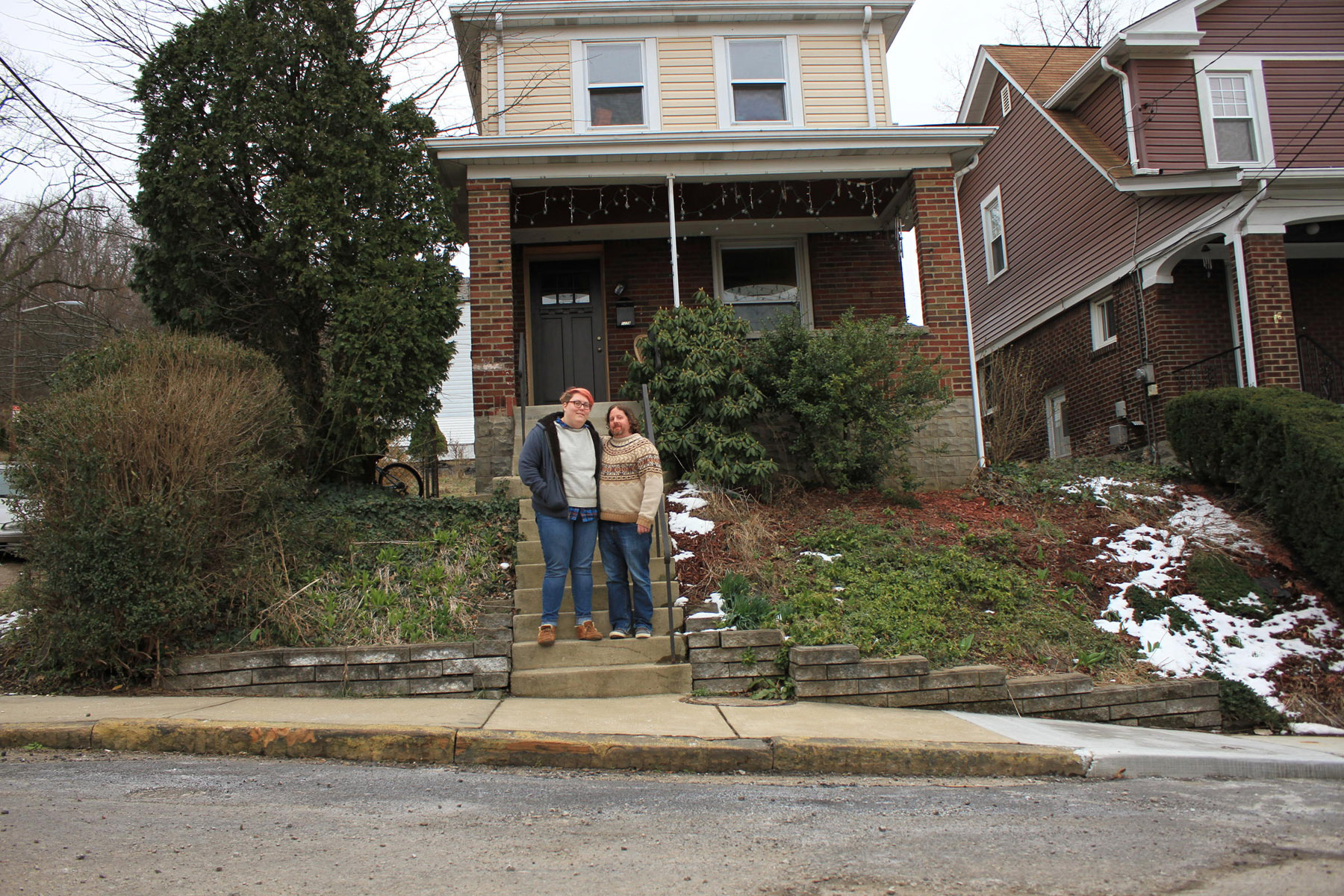Sabrina Spiher Robinson and her husband Ted Robinson live on a hill in Upper Lawrenceville. From the set of steep steps leading to their front door, they can see the Allegheny River. But mostly what they see are construction scars.
“In front of every house there is a trench and also then the trench extending down the whole street,” Spiher Robinson says, pointing out the fresh asphalt patches that map what’s below the pavement: the water main and service lines, which cut left and right from the street’s spine toward each house.
“And all of this has been sort of hastily filled in with asphalt that, especially in wintertime, is coming up in big chunks. And it has been like this for almost a year,” Spiher Robinson says.
Last May, crews excavated the couple’s street to begin a scheduled water main replacement. A month later, tests revealed that lead levels in Pittsburgh’s drinking water had jumped past federal limits. With its streets already undergoing water infrastructure work, the Pittsburgh Water and Sewer Authority (PWSA) decided to use the Upper Lawrenceville site to pilot a systematic replacement of lead service lines.
Their challenge, though, was that a service line has two distinct parts: The first is owned by PWSA and runs from the water main to the curb. The second runs from the curb to a house and belongs to the property owner. But under a Pennsylvania law called the Municipal Authorities Act, PWSA can’t touch the second piece.
“We’re sort of hamstrung in what options we have to replace the private side of the line,” says Bob Weimar, the authority’s interim director of engineering and construction.
So PWSA hatched a plan: They’d try to coordinate with homeowners so that everyone could replace their lines while PWSA had the street and sidewalks dug up.
Continue reading this story at WESA »
###
 This story comes from our partners at Keystone Crossroads, a reporting project exploring the urgent challenges pressing upon Pennsylvania's cities.
This story comes from our partners at Keystone Crossroads, a reporting project exploring the urgent challenges pressing upon Pennsylvania's cities.



